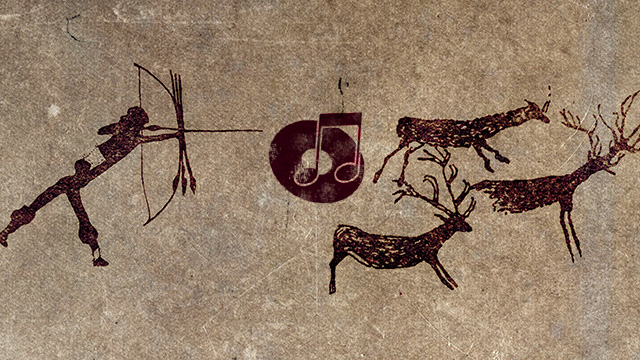
We're still waiting for the newest version of iTunes, which Apple introduced in September during its iPhone 5 media event. The makeover, which will undoubtedly end up as version 11.0 (though Apple isn't publicly referring to it as such), consists of a "dramatically simplified new interface," better iCloud integration, a revamped mini-player, and Facebook integration.
iTunes has walked a long road to reach this point—version 1.0 appeared in January 2001. While we're waiting for Apple's new ship date of "late November" to arrive, let's take a look back at how iTunes has evolved in the last 12 years.
iTunes 1.0: "World’s Best and Easiest To Use Jukebox Software"
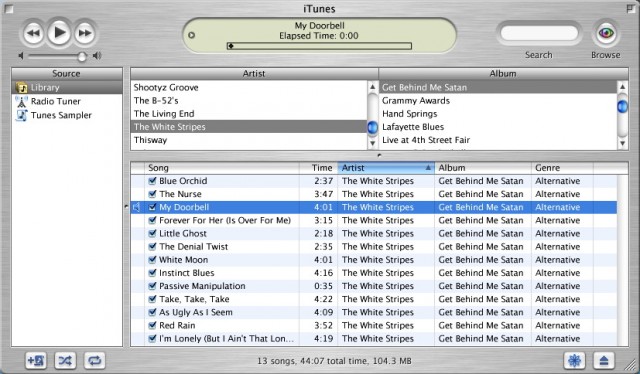
As mentioned above, iTunes was first released in January 2001. Apple advertised it as the most amazing jukebox software the world has ever seen, allowing users to rip CDs into MP3s and organize their music within an easy-to-use interface. The tagline "Rip. Mix. Burn." essentially came from this release—Apple emphasized the ability of users to make their own CD mixes and re-burn them back to CD, like a mix tape. At the time of this release, the iPod had not yet made its public debut—that came later in the year. So those MP3s you were ripping? They were meant to be synced to some other MP3 player, such as those that were available from Creative Labs or Rio. A week after the original release of iTunes, Apple announced it had seen a whopping 275,000 downloads from Mac users.
iTunes 2.0: Enter the iPod

The second full-point release of iTunes came 10 months after the first. That was because Apple finally revealed its ultra-secret project: the iPod. Apple advertised this release of iTunes as having "seamless integration" with its new MP3 player, with songs and playlists automatically syncing to the iPod over FireWire. Apple also added an equalizer and cross fading with this release, and began bundling iTunes with OS X. The software also allowed users to burn CDs of MP3 files, not just traditional CDs, so people could store more music than ever on their iTunes-mixed CDs.
iTunes 3.0: Smart playlists debut
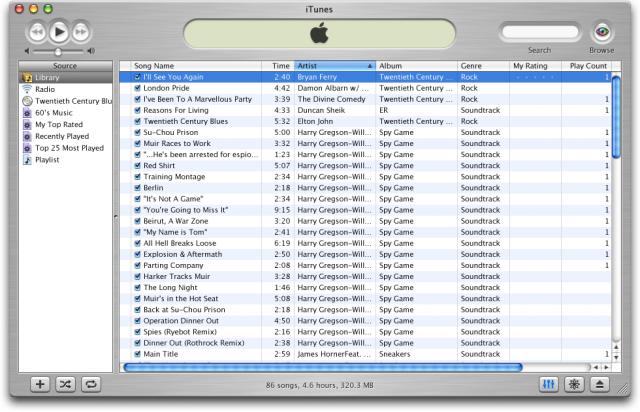
iTunes 3 was released in July 2002. The headline feature was smart playlists, which allowed users to create dynamic playlists based on a set of rules (like mail rules). If you wanted a playlist of your 20 most listened-to songs, or only songs you added since a certain date, iTunes would be happy to do it for you. iTunes 3 also came with "Sound Check," Apple's system for adjusting the volume of your playlist to a consistent level, and support for audiobooks from Audible.com.
iTunes 4.0: Music store, here we come
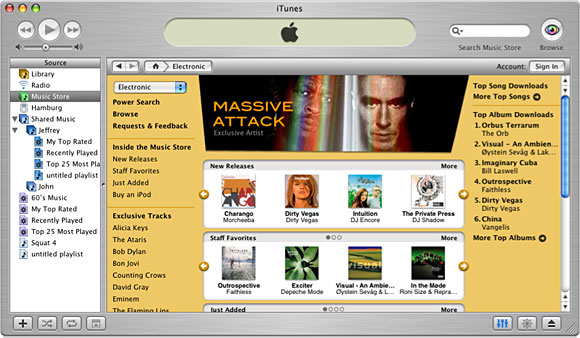
iTunes 4 was released in April 2003, bringing with it the first version of the iTunes Music Store. This, you can imagine, was huge—at the time, most Internet users were still either buying music in CD form or just pirating away. Buying music from a major company like Apple was something of a foreign concept, but Apple wooed users by offering individual songs for 99¢ apiece—now, everything was a single that you could cherry pick. Along with the iTunes Store came Apple's proprietary FairPlay DRM; users could burn music to an unlimited number of CDs or sync to an unlimited number of iPods, but only three Macs could play the files. FairPlay ended up being in place on music sold through the iTunes Store until 2009, when Apple introduced DRM-free "iTunes Plus" tracks.
iTunes 5.0: iPod nano, podcasts, and more

With iTunes 5, Apple moved major point releases of the app to the fall. The iPod nano had just been announced at the same 2005 media event, and iTunes 5 was (naturally) built to support it. Apple also added features like Smart Shuffle (Apple's attempt at making its random feature more, well, random), and allowed Windows users to sync their Outlook contacts and calendars to their iPods. (Just prior to the 5.0 release, Apple had released its first version of iTunes for Windows.) Leading up to this release, Apple had added podcast support to the software, as well as support for video, and "AirTunes" (what eventually became AirPlay), and support for the Motorola ROKR E1—arguably the "first" iPhone to hit the market before Apple released its own a couple years later. The phone was the first to fully integrate with iTunes, though Apple was reportedly never thrilled with Motorola's offering.
iTunes 6.0: Music videos galore
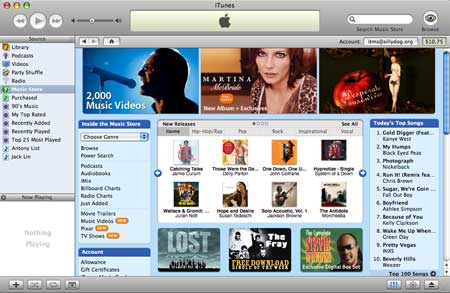
iTunes 6 arrived only a month after the release of iTunes 5—Apple was pretty loose with its full version numbers back then. In October of 2005, Apple added music videos to the iTunes Store for the first time, as well as a small handful of TV shows like Desperate Housewives, Lost, and Night Stalker for $1.99 per episode. This was TV's first foray into iTunes and the networks were wary of being taken advantage of by Apple. iTunes Store users could also purchase short films from Pixar for $1.99, foreshadowing the eventual release of movies through iTunes.
iTunes 7.0: Movies, movies, movies!

In September 2006, Apple introduced iTunes 7 as the "most significant enhancement to the world’s most popular music jukebox and online music and video store." Indeed, this was the release where Cover Flow made its first appearance, and the iTunes Store began carrying a whopping 75 movies from studios like Disney, Pixar, Touchstone, and Miramax. The films could be synced with users' iPods for on-the-go viewing, or could be played via Apple's soon-to-be-released Apple TV (then nicknamed "iTV" by Apple). Between the release of iTunes 6 and 7, Apple had made the software into a universal binary so it could be run on both Intel and PowerPC Macs, and added support for Nike+iPod—Apple's fitness collaboration with Nike. iTunes 7 was also the first version of iTunes that allowed users to sync iTunes-purchased music back from their iPods onto an authorized computer.
iTunes 8.0: Genius time
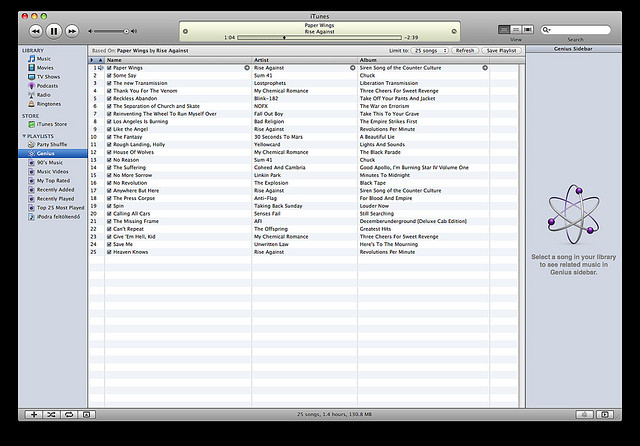
iTunes 8 was released in September 2008, two full years after iTunes 7. The major new feature was Genius playlists—Apple's algorithm for generating playlists based on a single song, where the selected songs were supposed to "go great together." Then there was the Genius Sidebar, an opt-in service that sent your iTunes library data back to the iTunes Store so Apple could eventually refine exactly which songs went so great together. But that wasn't all. Apple had also begun adding HD TV shows to the iTunes Store, and previously, it had added support for iPhone activation (the iPhone was released a year and some months prior). You could also download your movie or TV purchases that you made from an Apple TV to your computer as well, allowing users to make a backup of the media they'd bought elsewhere.
iTunes 9.0: Sharing is caring

iTunes-Store-exclusive features, such as iTunes LP and iTunes Extras, became big with the release of iTunes 9 in September of 2009. Apple also added Genius Mixes along with a new Home Sharing feature, which allowed different iTunes account holders on the same network to see and share each other's DRM-free music through iTunes. Previously, users had to send around files to their loved ones; this was the first time Apple added file sharing capabilities directly into iTunes. Leading up to iTunes 9, Apple added support for the rental of HD movies, replaced Party Shuffle with iTunes DJ as a way for users to queue up music in a party environment, and stopped syncing with the Palm Pre. Also, with the release of iTunes 9, Apple made it possible for users to organize their iPhone apps directly from within iTunes, which would then be reflected on their iPhones without any extra steps. Hallelujah!
iTunes 10: The Ping that gets no response
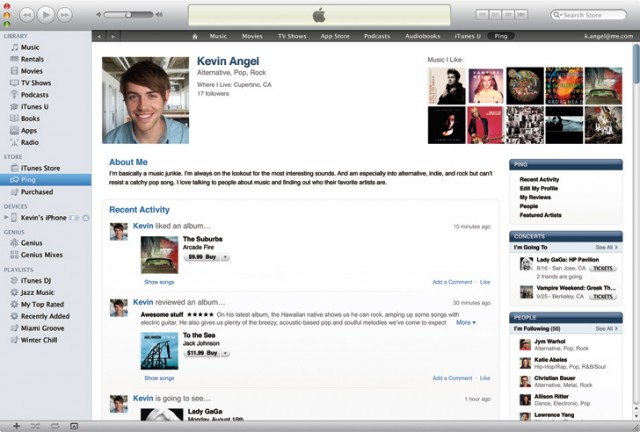
Apple's first attempt at integrating iTunes into a social network came in September of 2010. Dubbed "Ping," the network was meant as a sort of Facebook-mashed-with-iTunes offering that let users share what they were buying or listening to with friends. Users could also follow artist pages to get firsthand info from their favorite musicians, such as concert dates or other musings. With the release of iTunes 10, AirTunes officially became AirPlay, which Apple now uses to allow Macs and iOS devices to stream audio and video to AirPlay-compatible gadgets. iTunes Match also made its debut with this release, letting users who had ripped (or *cough* pirated) MP3s pay a fee to "match" that music with songs on the iTunes Store. iTunes Match users could then download and play that music on a plethora of iOS devices, though some users feared Apple would keep track of the iTunes Match data and report music pirates to the authorities.
iTunes 11: A fresh start
Well, we know about the next major version of iTunes because Apple gave us a preview in September of 2012. But the company pushed its original release date of "late October" to "late November," so at this point, all we have to work with is what Apple has presented us.
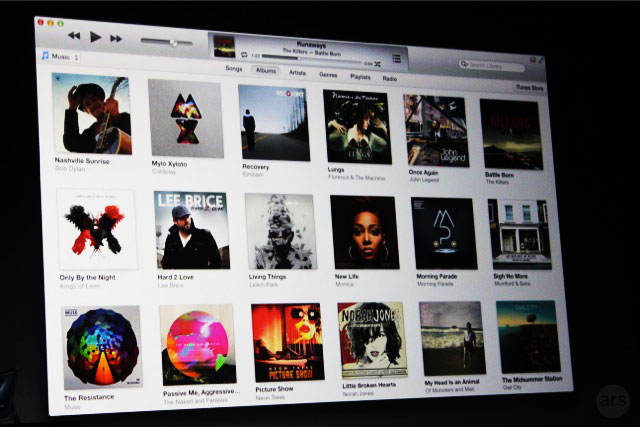
So what makes the next version of iTunes so great? For one, it has a revamped UI meant to provide a more themed experience when listening to albums. It also has better integration with iCloud, which now automatically downloads your iOS device purchases directly to your iTunes library on the computer. And finally, iTunes can pick up on a movie where you left off on your iPhone or iPad. Oh, and did we mention the redesigned Mini Player?

Apple has decided to shut down Ping and move onto greener pastures. Instead, the iTunes Store itself will be able to offer some Ping-like features, such as artist pages with information about shows. And similarly, purchases can still be "liked," but they'll be posted to Twitter and/or Facebook instead of Apple's own offering.
reader comments
133